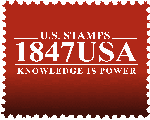The most important factor to consider is the quality of the color. As a result of the weathering and accumulation of dirt over 150 years, a stamp that may have started looking quite bright and pretty becomes one whose color is barely distinguishable from others and frankly, quite drab. And many if not most copies of the 3 Cent 1861 are quite weathered. This means that many color effects will not be readily visible, even between comparison copies, so it is essential that you deal with specimens with well preserved color. Therefore, you should set your standard high when you chose items for your collection. The color needs to be strong enough to see significant differences under almost any normal lighting condition. Washed out or weathered colors are hard to differentiate.
Where the Color Comes From
The production of all of these stamps started with a strong and dark red pigment cochineal. An organic dye, cochineal is stable and is not susceptible to fading, but apparently it can vary somewhat in how red it is. The red is normally slightly on the violet side but can be slightly on the orange side. The color is dark (close to black-see Figure 1) and therefore it needed to "tinted" or thinned somewhat for use in a stamp.
None of the resulting stamps, however, are pure tints of red. They are tones and shades colors that are normally browner or tending toward maroon due the presence of black, and perhaps a green or yellowish substance, in varying degrees. (See figure 2). Some of these "darkening" influences are naturally embedded in the pigment itself but they may also be due to the addition of other coloring agents that enter the mix in the printing process. The effect is that instead of seeing a vibrant carmine, crimson, red, or scarlet you get something that is literally toned down. This phenomenon is discussed in more detail below.

Figure 1 - The color of cochineal it is thought that with the exception of some of the post 1864 stamps all of the 3 cent 1861 started with this dye
Why these Color Look The Way The Do
Essentially the color of this stamp is derived from red pigments. R. Whites analysis found that the pigment is cochineal. Cochineal comes in a narrow range of red colors at the top of the color wheel. Cochineal is extracted from an insect using a fairly laborious process. In short, preparation of this dye was a craft adding a degree of variability to a naturally variable colorant. Each dye lot varied slightly. The color of the dye did not have to vary much to make a big difference in the final outcome in the finished stamp.
Some of these reds are on the violet side of the spectrum while others can be a bit on the orange side of the spectrum. Apparently, the color of all of these stamps is derived from this one pigment and the addition of lead based (white) fillers. More than one lead filler was used, but perhaps in varying proportions. It is possible that the tinting effect was achieved by merely thinning the red particles in some sort of solvent or in the ink medium itself (linseed or similar oil)
When you tint a red hue (by adding white lead based fillers, or under certain circumstances, thinning it allowing more white to show between pigment particles, you get a lighter color, namely pink.
There are many types and shades of pinks in nature and industry, the this stamp is not exception. When you tint a red that is on the violet side you get a rose, lilac or lavender color. Tinting an orange red yields scarlet, pastel scarlet, and salmon-like colors. All these are pinks but they are not necessarily regarded, recognized or certified as such mostly the result of tradition.
Adding the complementary color (in this case green) you get purples, a rich red brown, brick reds, or deep, bright or dark browns. These are "shades" of red.

Figure 2 - Tints, Tones & Shades derived From A Red Hue.
It is doubtful the printers deliberately incorporated a green pigment but you get many of the same effects with black (possibly a contaminate) though the result is much less vibrant and much more muddy. We see both phenomena in this stamp. There are two ways green is introduced and you do not need much. The first occurs if you blend a violet red and orange red. The blue in the violet and the yellow in the orange component can combine to produce green. The result is a range of colors --mostly deep shades.
The second is the effect of a varnish that appears to be the medium in which the color particles are suspended and disbursed, or it is a medium applied to the plate before the fluid containing the pigment is applied. This varnish found in all the stamps of this issue. It ranges can be seen in a greenish yellow, yellow, tan or brownish. It is usually so thin as to appear white but its color is measurable. Normally it is found in the portions of the design where there is no color. Where the colored parts of the design are very close to the blank parts, such as in the lattice work or in between color particles, the eye will blend the two colors.
This yellow "soup" can be heavy or barely discernible. And the yellow fluid sometimes appears to float over or become interspersed with the red particles of pigment. Again the eye will combine these. That means you are seeing red and yellow combined or red and a greenish color combined. The effect is a shade or tone. The color we label as "rose" is in fact as shade formed by the presence of this varnish colorant. In the pinks the varnish is either absent or far removed enough that the eye does not combine the two colors.
Virtually all of the three cent stamps are tones. Even the rose, as it is referred in the catalogs and common discourse, is actually a tone. Very few true roses exist they tend to be distinguished from the carmine pinks only in the degree of tinting i.e. they are deeper in color such that they are no longer identifiable as pink. In effect they are minimally tinted pinks and can referred to as reds, dark pinks, or true roses. Purity of color the lack of off color contaminants the key feature to look for. Typically, shades are very dark but in practice, in the production of this stamp, they are also tinted somewhat. This combination of shading and tinting is called toning.
The pinks and true roses and some early salmon-like examples are close to being true tints but this is a matter of degree. The ubiquitous presence of yellow to greenish varnish used in the ink formula has the effect of creating shade-like effects in virtually all 3 cent 1861s. [I think this varnish is the medium in which the dyes were suspended. It is possible that some of the cochineal dissolved in the varnish, but it is more likely it was mostly suspended. ]
This varnish effect can be minimal. If it is minimal enough the stamp can be called and will look pink. Additionally, true roses and salmon like colors that are relatively free from the toning effect do exist and are quite attractive and desirable as are the pinks.
Structure is Essential
Most importantly is the fact that in many of these stamps you are seeing several hues at work (each with some degree of toning). Up close you see indidual particles of varying color and size. Some of them have color bleeding away into halos of lighter color. This color can be thinned red, orange red, violet, or magenta-like colors, or combinations. Furthermore you have regions in which there appear to be small remnants of the yellowish varnish. Up close you see the complexity but from afar, though, you get a pointillism effect. Its much like the bark for a tree that from a distance looks brown or purple but up close it is a combination of colors side by side. For this reason it is really not possible to precisely match many colors with various color chips (Munsel or Ridgeway) because the chips are a single solid color. You can, however, precisely identify and measure the points of color and this can be translated into a signature for nearly all shades.
Many Factors Affect What Color You See
Many factors other than the pigments contribute to the variability we see in the 3 cent 1861.
This dye is easily affected by contamination. Introduction of manganese for example yields a purple color something we see from time to time throughout the production history.
Paper can be white, thin, gray paper and harder or softer and varies in apparent porosity. All these affect the way the ink is laid on the paper and the way we see it. And since the ink is partly transparent, paper color shows through and can affect the color you see. A stamp on cover is affected by the color of the cover. Likewise many of these stamps are simply dirty.
Ink & Impression qualities are important in how much colorant is visible relative to the overall. And it can be a clue that the formulation is different than a stamp with similar color but a different impression quality. Among the impression attributes that should be considered are;
Is it a high relief (raised) or flat impression
Is the impression blotchy does the stamp have dry print areas or are section over-inked
What is the consistency of color throughout the stamp
Is the impression proof like or blurred
Is the impression flat, glossy or chalky.
Is the stamp luminescent
The size of the pigment particles is an important factor. Likewise the degree to which particles are clumped together can affect how light or dark the color is. Furthermore, some of the clumps appear to bleed perhaps smaller particles are moving away from larger one into the solvent or medium. You can observe purple, violet, magenta, orange or tan bleeds, washes or halos. This is a crucial factor determining color you see via the shading, toning and pointillism effects described above. For example the presence of violet washes will give the stamp a bluish cast or luminescence. A tan-yellow wash however will tone down any underlying hue.
Finally, weathering is important. The colored portions of this stamp are raised and these exposed surfaces can be more weathered than the sides. Angular light hits these sides and can bring these relatively less weathered portions of the image into view and reveal something that may be closer to the original. This effect appears to be somewhat pronounced in certain scanners.
Oxidation - The presence of sulfur in the air, or in fumigants, turns these stamps black. If the effect is minimal it can turn a rosy or pink stamp purple or brown. Therefore it is essential to examine purple and brown stamps carefully to determine if the color is native or due to sulphuretting. Sulphuretting can be removed with peroxide. Some shades seem to bemore susceptible to this effect than others.






